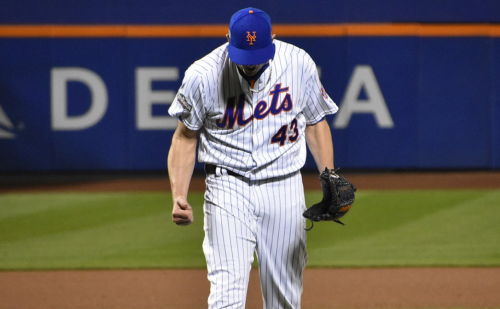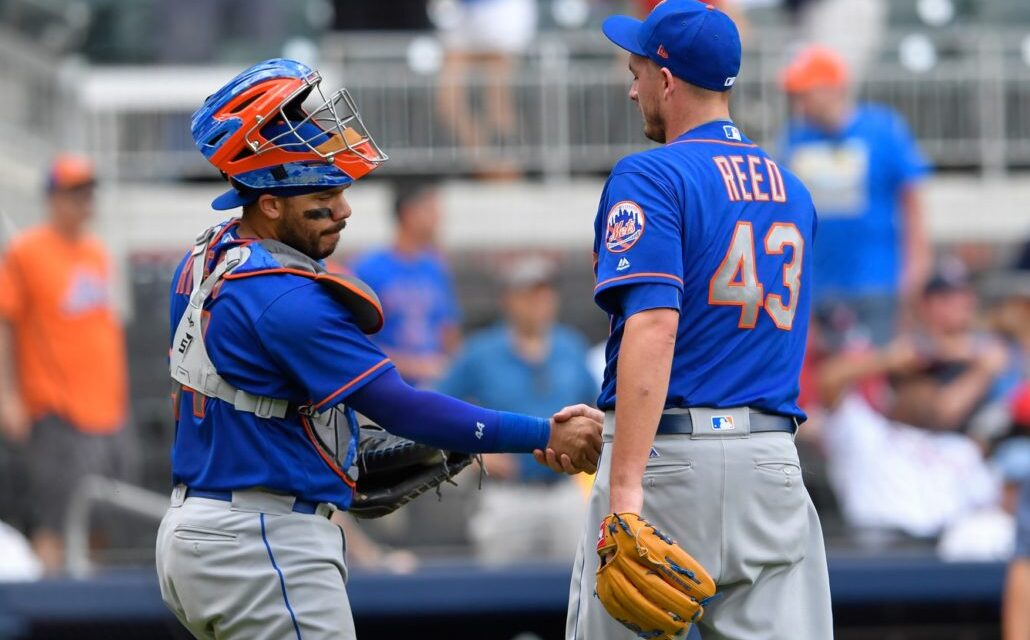
Addison Reed was at a low point in his career when he was traded to the Mets in August 2015.
The Diamondbacks’ reliever had struggled to the tune of a 4.20 ERA, lost his closer spot and eventually his spot in the major leagues. Reed was a far cry from the closer who had had 40 saves with the White Sox just two years prior.
Once he was traded to the Mets, everything changed.
Reed put up a 1.17 ERA over the final month of the 2015 season, and carved a spot for himself as the full-time setup man in 2016. Overall, Reed’s 2.09 ERA as a Met is the lowest ERA in team history for any pitcher with at least 100 innings pitched.
Not bad for a late-August trade acquisition for two players I bet you can’t name off the top of your head.
General Manager Sandy Alderson has received the most credit for trades involving high-end starting pitching, like the Noah Syndergaard and Zack Wheeler trades. There’s no question those have been his best. But the trade for Addison Reed should stand out as one of his finest moments as Mets GM. Finding top-tier relief pitchers with several years of team control without giving up a top prospect is tough to find– let alone on August 30.
This is supplemented by the fact that the Mets gave up pretty much nothing to get Reed.
The two prospects the Mets gave up on the Reed deal were minor-league pitchers Matt Koch and Miller Diaz. Koch, 26, pitched briefly for the Diamondbacks last season, but has struggled in the minor leagues this season, pitching to a 7.03 ERA. Diaz is still in Double-A at 25-years-old. So while the book has not yet closed on Koch and Diaz, it’s safe to say that the Mets robbed the Diamondbacks on this deal.
In addition to acquiring a top-tier reliever, the Mets have also gotten a pretty solid pool of relief prospects back in return for Reed.
They’ve received three relievers from the Red Sox’s top 30 prospects, per MLB Pipeline: No. 18 RHP Stephen Nogosek, No. 23 RHP Jamie Callahan, No. 28 RHP Gerson Bautista. Callahan could make the majors as soon as next year, and the other two have a good amount of upside despite being a bit further behind.
Reed exceeded everyone’s expectations with the Mets; this probably includes both his own and Sandy Alderson’s.
At the time of this deal, the Mets were just looking for a seventh-inning guy who could supplement Tyler Clippard and Jeurys Familia. If he was serviceable, that would have been fine. But they ended up getting a guy who would set a record for lowest ERA in franchise history, and three solid relief prospects over the long run.
So while you probably won’t hear the Reed trade mentioned in most conversations for greatest trade in Mets history, it certainly belongs there.















